Cambodia on Friday welcomed a 19 percent trade tariff announced by US President Donald Trump, avoiding a threatened levy of 36 percent days after he intervened to help broker a ceasefire in their border conflict.
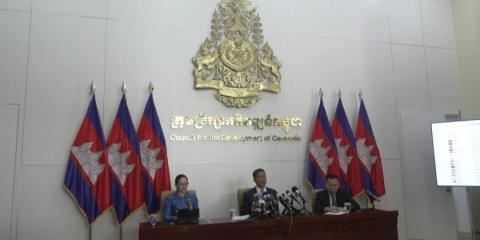
Cambodia on Friday welcomed a 19 percent trade tariff announced by US President Donald Trump, avoiding a threatened levy of 36 percent days after he intervened to help broker a ceasefire in their border conflict.
Cambodia said it would drop all tariffs on imports from the United States and order up to 20 Boeing 737s for its national airline in a further effort to woo the Trump administration. "This is the best news for the people and economy of Cambodia to continue to develop the country," Cambodian Prime Minister Hun Manet stated on his social media.
mitv
Cambodia on Friday welcomed a 19 percent trade tariff announced by US President Donald Trump, avoiding a threatened levy of 36 percent days after he intervened to help broker a ceasefire in their border conflict.
Cambodia said it would drop all tariffs on imports from the United States and order up to 20 Boeing 737s for its national airline in a further effort to woo the Trump administration. "This is the best news for the people and economy of Cambodia to continue to develop the country," Cambodian Prime Minister Hun Manet stated on his social media.
mitv
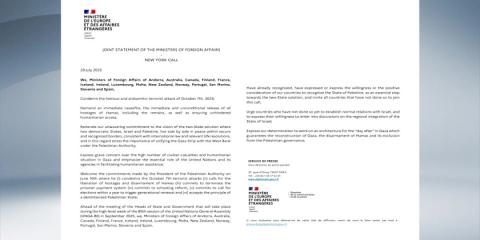
U.S. President Donald Trump said on Thursday that the United States will be talking to Mexico over the next 90 days with the goal of signing a trade deal. Trump said in a Truth Social post after a phone conversation with Mexican President Sheinbaum. Trump stressed the unique complexities of a deal with Mexico due to the shared border of the two countries.
mitv
U.S. President Donald Trump said on Thursday that the United States will be talking to Mexico over the next 90 days with the goal of signing a trade deal. Trump said in a Truth Social post after a phone conversation with Mexican President Sheinbaum. Trump stressed the unique complexities of a deal with Mexico due to the shared border of the two countries.
mitv
U.S. President Donald Trump said on Thursday that the United States will be talking to Mexico over the next 90 days with the goal of signing a trade deal. Trump said in a Truth Social post after a phone conversation with Mexican President Sheinbaum. Trump stressed the unique complexities of a deal with Mexico due to the shared border of the two countries.
mitv

The U.S. Federal Reserve on Wednesday kept the target range for the federal funds rate unchanged at 4.25 percent to 4.5 percent, though it faces stark pressure and harsh criticism from the Trump administration. Uncertainty about the economic outlook remains elevated, said the statement.
The U.S. Federal Reserve on Wednesday kept the target range for the federal funds rate unchanged at 4.25 percent to 4.5 percent, though it faces stark pressure and harsh criticism from the Trump administration. Uncertainty about the economic outlook remains elevated, said the statement.
The U.S. economy expanded at an annualized rate of 3 percent in the second quarter, compared with a contraction of 0.5 percent in the first quarter, according to data released Wednesday by the U.S. Commerce Department. Fed Chair Jerome Powell said the Fed had not yet determined whether it would cut rates at its September meeting. The Fed does not consider the cost of rate changes to the governments and the fiscal needs of the federal government, he added.
mitv
The U.S. Federal Reserve on Wednesday kept the target range for the federal funds rate unchanged at 4.25 percent to 4.5 percent, though it faces stark pressure and harsh criticism from the Trump administration. Uncertainty about the economic outlook remains elevated, said the statement.
The U.S. economy expanded at an annualized rate of 3 percent in the second quarter, compared with a contraction of 0.5 percent in the first quarter, according to data released Wednesday by the U.S. Commerce Department. Fed Chair Jerome Powell said the Fed had not yet determined whether it would cut rates at its September meeting. The Fed does not consider the cost of rate changes to the governments and the fiscal needs of the federal government, he added.
mitv
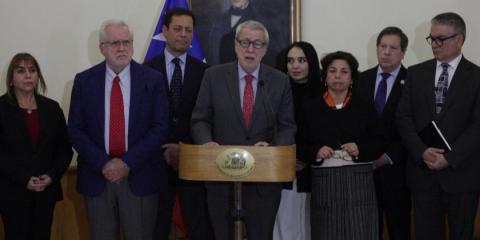
Chilean ministers welcomed the United States' decision to exclude copper from a 50-percent levy on semi-finished products. The price of copper, which had soared after US President Donald Trump flagged the tariffs earlier this month, plunged by almost 20 percent when it emerged the duty would not apply to refined or raw copper metal.
The metal is used extensively in industry and defense manufacturing, and the White House said the United States had become overly reliant on copper imports, having once been a world leader in production.
mitv
Chilean ministers welcomed the United States' decision to exclude copper from a 50-percent levy on semi-finished products. The price of copper, which had soared after US President Donald Trump flagged the tariffs earlier this month, plunged by almost 20 percent when it emerged the duty would not apply to refined or raw copper metal.
The metal is used extensively in industry and defense manufacturing, and the White House said the United States had become overly reliant on copper imports, having once been a world leader in production.
mitv
Chilean ministers welcomed the United States' decision to exclude copper from a 50-percent levy on semi-finished products. The price of copper, which had soared after US President Donald Trump flagged the tariffs earlier this month, plunged by almost 20 percent when it emerged the duty would not apply to refined or raw copper metal.
The metal is used extensively in industry and defense manufacturing, and the White House said the United States had become overly reliant on copper imports, having once been a world leader in production.
mitv

Chinese and US officials wrapped the first day in a fresh round of talks in Stockholm on Monday, with the world's top two economies looking to extend a fragile trade truce in the face of President Donald Trump's global tariff war.
Chinese and US officials wrapped the first day in a fresh round of talks in Stockholm on Monday, with the world's top two economies looking to extend a fragile trade truce in the face of President Donald Trump's global tariff war.
The talks came a day after Trump reached a deal with the EU that will see the bloc's exports to the United States taxed at 15 percent. The United States and China earlier this year-imposed triple-digit tariffs on each other in a tit-for-tat escalation, but then walked back under a temporary agreement reached in May.
mitv
Chinese and US officials wrapped the first day in a fresh round of talks in Stockholm on Monday, with the world's top two economies looking to extend a fragile trade truce in the face of President Donald Trump's global tariff war.
The talks came a day after Trump reached a deal with the EU that will see the bloc's exports to the United States taxed at 15 percent. The United States and China earlier this year-imposed triple-digit tariffs on each other in a tit-for-tat escalation, but then walked back under a temporary agreement reached in May.
mitv
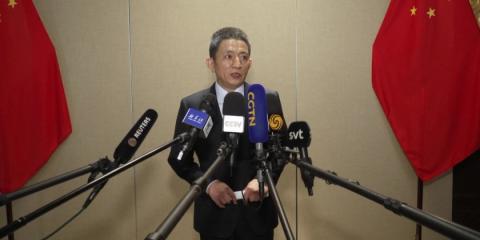
China and the United States wrapped up two days of trade talks in Stockholm, the capital city of Sweden, on Tuesday, and agreed to maintain timely exchanges on trade and economic issues.
China and the United States wrapped up two days of trade talks in Stockholm, the capital city of Sweden, on Tuesday, and agreed to maintain timely exchanges on trade and economic issues.
The talks were held between the Chinese delegation led by Vice Premier He Lifeng and the U.S. delegation led by Treasury Secretary Scott Bessent. According to consensus between China and the United States, the two sides will continue pushing for the continued extension of the pause on 24 percent of reciprocal tariffs of the U.S. side, as well as counter measures of the Chinese side.
mitv
China and the United States wrapped up two days of trade talks in Stockholm, the capital city of Sweden, on Tuesday, and agreed to maintain timely exchanges on trade and economic issues.
The talks were held between the Chinese delegation led by Vice Premier He Lifeng and the U.S. delegation led by Treasury Secretary Scott Bessent. According to consensus between China and the United States, the two sides will continue pushing for the continued extension of the pause on 24 percent of reciprocal tariffs of the U.S. side, as well as counter measures of the Chinese side.
mitv

During the talks with British Prime Minister Keir Starmer in Scotland Monday, President Donald Trump said that the tariff for "essentially the rest of the world", of between 15 to 20 percent, targeting pharmaceuticals would be announced.
Starmer, under domestic pressure to follow France's lead and recognize a Palestinian state, called the situation unfolding in Gaza an "absolute catastrophe".
During the talks with British Prime Minister Keir Starmer in Scotland Monday, President Donald Trump said that the tariff for "essentially the rest of the world", of between 15 to 20 percent, targeting pharmaceuticals would be announced.
Starmer, under domestic pressure to follow France's lead and recognize a Palestinian state, called the situation unfolding in Gaza an "absolute catastrophe".
The pair also discussed implementation of the UK-US trade deal that was signed on May 8 that lowered tariffs for certain UK exports but has yet to come into force. Trump hosted Starmer and his wife Victoria under tight security at Turnberry, where he had spent two days playing golf since landing in Scotland on Friday for a five-day visit.
mitv
During the talks with British Prime Minister Keir Starmer in Scotland Monday, President Donald Trump said that the tariff for "essentially the rest of the world", of between 15 to 20 percent, targeting pharmaceuticals would be announced.
Starmer, under domestic pressure to follow France's lead and recognize a Palestinian state, called the situation unfolding in Gaza an "absolute catastrophe".
The pair also discussed implementation of the UK-US trade deal that was signed on May 8 that lowered tariffs for certain UK exports but has yet to come into force. Trump hosted Starmer and his wife Victoria under tight security at Turnberry, where he had spent two days playing golf since landing in Scotland on Friday for a five-day visit.
mitv
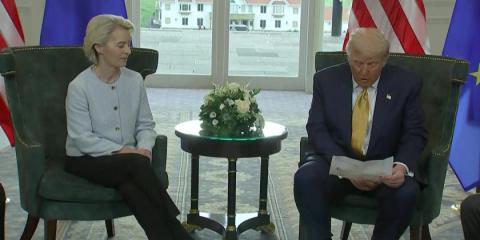
US President Donald Trump said he has reached a tariff agreement with the European Union. He met European Commission President Ursula von der Leyen in Scotland on Sunday.
Trump had said Washington would impose a 30 percent levy on goods from the EU starting on August 1. But, he said the rate will be set at 15 percent. Trump explained that automobiles and nearly everything else will be subject to that rate. But, he said the 50 percent tariff on steel and aluminum imports will remain unchanged.
US President Donald Trump said he has reached a tariff agreement with the European Union. He met European Commission President Ursula von der Leyen in Scotland on Sunday.
Trump had said Washington would impose a 30 percent levy on goods from the EU starting on August 1. But, he said the rate will be set at 15 percent. Trump explained that automobiles and nearly everything else will be subject to that rate. But, he said the 50 percent tariff on steel and aluminum imports will remain unchanged.
Trump said the EU is going to agree to buy 750 billion dollars' worth of energy from the US and make new investments of 600 billion dollars in the country. Trump also said all of the EU countries will be opened up to trade with the US at a zero tariff. He said he thinks the agreement is the biggest deal ever made. Von der Leyen said they reached a trade deal between the two largest economies in the world, and that it will bring stability and predictability.
mitv
US President Donald Trump said he has reached a tariff agreement with the European Union. He met European Commission President Ursula von der Leyen in Scotland on Sunday.
Trump had said Washington would impose a 30 percent levy on goods from the EU starting on August 1. But, he said the rate will be set at 15 percent. Trump explained that automobiles and nearly everything else will be subject to that rate. But, he said the 50 percent tariff on steel and aluminum imports will remain unchanged.
Trump said the EU is going to agree to buy 750 billion dollars' worth of energy from the US and make new investments of 600 billion dollars in the country. Trump also said all of the EU countries will be opened up to trade with the US at a zero tariff. He said he thinks the agreement is the biggest deal ever made. Von der Leyen said they reached a trade deal between the two largest economies in the world, and that it will bring stability and predictability.
mitv

Ninety-nine percent of India’s exports to the United Kingdom will now enter duty-free, announced Commerce and Industry Minister, after the historic signing of the India-UK Free Trade Agreement (FTA).
Speaking at a press briefing in New Delhi, Minister Goyal hailed the agreement as “game-changing”, highlighting that it will benefit farmers, youth, MSMEs, and industries across India. This agreement is expected to greatly enhance bilateral trade and open new markets for Indian exports in the UK.
Ninety-nine percent of India’s exports to the United Kingdom will now enter duty-free, announced Commerce and Industry Minister, after the historic signing of the India-UK Free Trade Agreement (FTA).
Speaking at a press briefing in New Delhi, Minister Goyal hailed the agreement as “game-changing”, highlighting that it will benefit farmers, youth, MSMEs, and industries across India. This agreement is expected to greatly enhance bilateral trade and open new markets for Indian exports in the UK.
mitv
Ninety-nine percent of India’s exports to the United Kingdom will now enter duty-free, announced Commerce and Industry Minister, after the historic signing of the India-UK Free Trade Agreement (FTA).
Speaking at a press briefing in New Delhi, Minister Goyal hailed the agreement as “game-changing”, highlighting that it will benefit farmers, youth, MSMEs, and industries across India. This agreement is expected to greatly enhance bilateral trade and open new markets for Indian exports in the UK.
mitv

US President Donald Trump arrived in Scotland on Friday for a five-day visit. He is scheduled to meet with British Prime Minister Keir Starmer to discuss the trade deal they reached earlier this year.
Trump is expected to remain in Scotland until Tuesday. US media have reported that he will visit golf resorts owned by his family's business. In May, the US and Britain were the first to announce what Trump called a "breakthrough" in tariff negotiations. The two leaders later signed the agreement.
US President Donald Trump arrived in Scotland on Friday for a five-day visit. He is scheduled to meet with British Prime Minister Keir Starmer to discuss the trade deal they reached earlier this year.
Trump is expected to remain in Scotland until Tuesday. US media have reported that he will visit golf resorts owned by his family's business. In May, the US and Britain were the first to announce what Trump called a "breakthrough" in tariff negotiations. The two leaders later signed the agreement.
After arriving in Scotland, Trump said he will meet with European Commission President Ursula von der Leyen on Sunday. He added that there was a "good 50-50 chance" for a trade deal with the EU. Trump is also expected to return to the UK in mid-September as a state guest after receiving an official invitation from King Charles.
mitv
US President Donald Trump arrived in Scotland on Friday for a five-day visit. He is scheduled to meet with British Prime Minister Keir Starmer to discuss the trade deal they reached earlier this year.
Trump is expected to remain in Scotland until Tuesday. US media have reported that he will visit golf resorts owned by his family's business. In May, the US and Britain were the first to announce what Trump called a "breakthrough" in tariff negotiations. The two leaders later signed the agreement.
After arriving in Scotland, Trump said he will meet with European Commission President Ursula von der Leyen on Sunday. He added that there was a "good 50-50 chance" for a trade deal with the EU. Trump is also expected to return to the UK in mid-September as a state guest after receiving an official invitation from King Charles.
mitv

